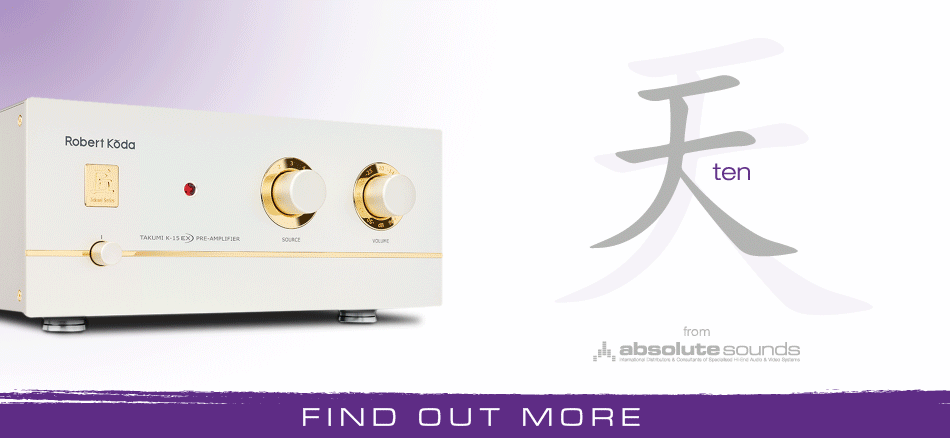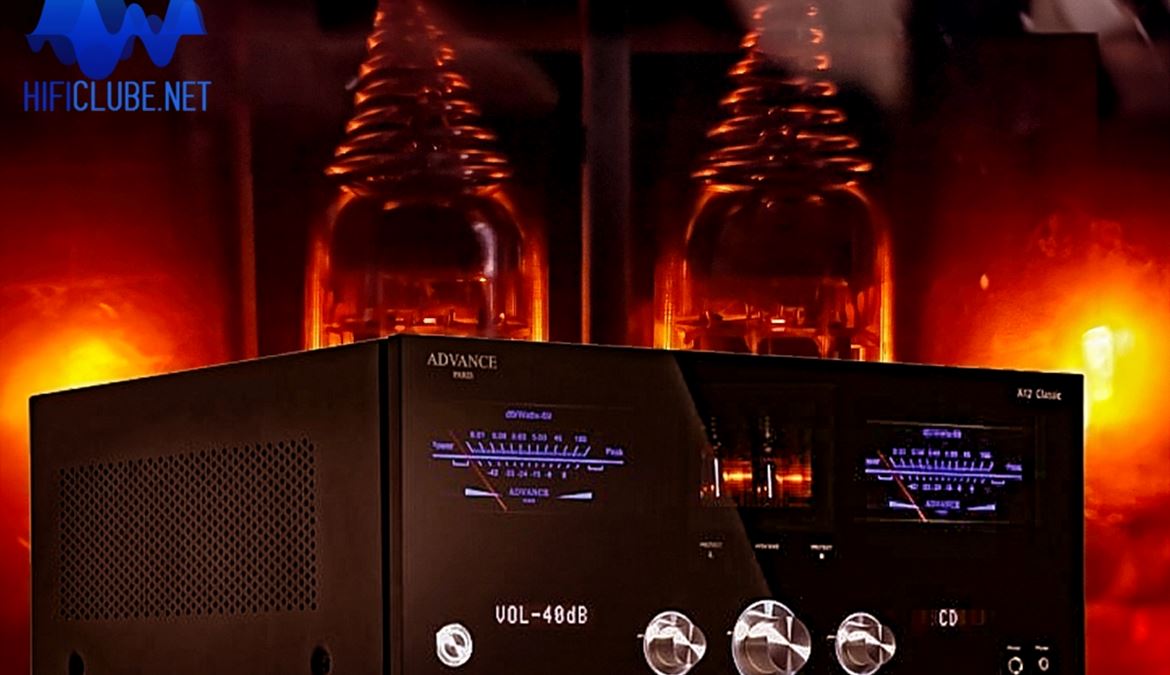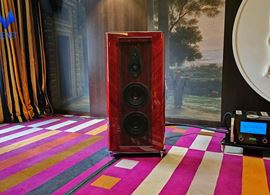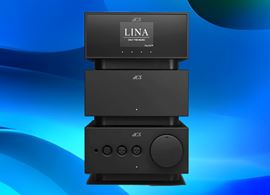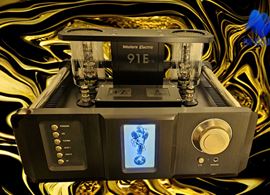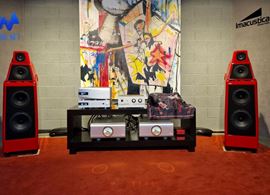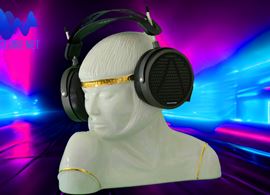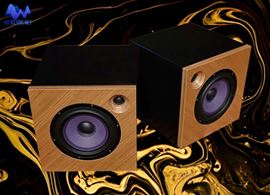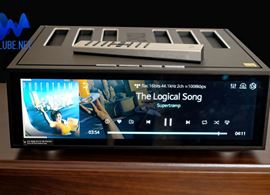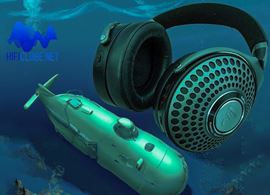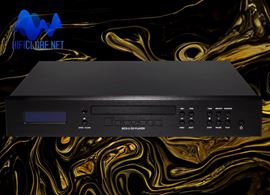I went for a ride with an A12 and discovered its fantastic headphone amplifier. And that it also accepts digital signals from SACD, Blu-Ray, and DVD-Audio through HDMI.
When I requested an Advance Paris Classic A12 amplifier for testing from Delfin Yanez, he recommended the A10 instead. He reasoned that he firmly believed that the fewer components involved in the signal path, the better the sound quality. Since more power calls for more transistors, this increases the possibility of phase shifts that can affect our perception of timing and rhythm. So we shouldn't invest in more power than is necessary. Complex problems are best solved with simple means.
Complex problems are best solved with simple means.
In addition, the A12 is more expensive (2,690€) and also heavier (18kg), which makes the logistics of delivery and assembly more complicated. Also, the A12 uses Burr Brown PCM 1796 in the digital section, while the A10 (at least the original) uses AK4490s, which are considered much more musical.
Note: I checked and the A12 is fully compatible with 32bit/384kHz and DSD 128 (DoP). It is also compatible with Tidal full MQA files through Roon. All using Wasapi Exclusive Mode.
On the other hand, I had heard the A10 several times before and always liked its sound, so that would be half the battle for a more favourable review.
But I persisted with the A12, and you'll soon see why.
Old recipe that sounds delicious
The secret of the Advance Paris Classic line lies in the Class A/B transistor amplifier. It's an 'old-fashioned' recipe without the Class D amenities.
The tube preamp and DAC may be additional selling points, as are the VUmeters, and glass panel. However, the Classics show their true worth with analogue sources, i.e. CD player, external DAC or turntable (configurable phono stage), considering their very affordable price and the power available to drive any difficult speaker.
They do indeed use high negative feedback to ensure stability and low distortion as long as the volume is kept within reasonable parameters, and it's also true that the tube gain stage functions more as a second harmonic flavour than an example of vacuum transparency.
If you base your amp purchase on SINAD tests, forget it. Visit Delaudio and test the A12 with your own ears. You can even bring your amplifier for comparison and be surprised.
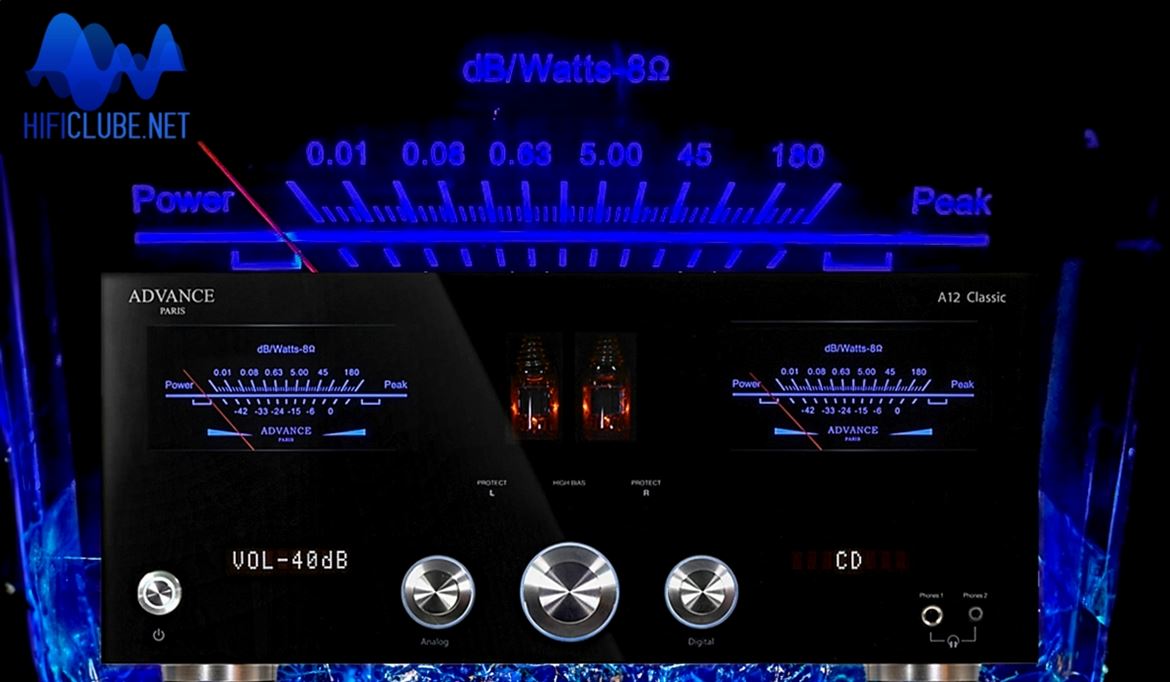
Steady tempo
The sound of the Advance Paris Classic has a special quality that is often referred to as musicality—it just sounds right. Delfin Yanez, the importer of these amplifiers, believes that they play at the right tempo, which is a defining characteristic of great musicians and conductors. Instead of focusing on frequency response, they are concerned with mastering the timing of music and handling the pauses between notes.
When I tested the Playstream A5, I wrote:
"If an audio component, regardless of its price or the fame that precedes it, can keep me in pleasant company for a more or less long time—or while I'm writing, for example, which is the best proof that it doesn't bother me—without me having the urge to switch it off immediately, it qualifies for critical listening. Otherwise, it goes back to where it came from."
Et pour cause, the A12 stayed in the house longer than planned. It's true that, for the reasons already mentioned, I listened to it mainly as an amplifier, connected to a pair of Quad Revela 1, with the excellent Eversolo DMP-A8 as the source.

The A12 isn't a digital hub per se: although it offers 11 digital inputs, it has no streamer function. However, it can be connected to a PC via USB-B. And, noblesse oblige, it comes with an optional Bluetooth, so you can pair it with your mobile phone.
Why the A12?
So why did I choose the A12 and not the A10? Perhaps the fact that it has a dual-mono configuration, balanced inputs and outputs, or 180 W of power? While those, all played a part, the two main reasons were:
- HDMI audio input;
- Dual headphone amplifier circuit with impedance switch.
So far, I have had trouble finding a budget amplifier/DAC that has a pure HDMI audio input. I am not talking about the HDMI ARC input that is commonly used with TVs. I need an HDMI input that can directly connect my old Oppo Universal player to the amplifier while keeping the SACD, Blu-Ray-Audio, and DVD-Audio output signals in digital format. The A12 has it.
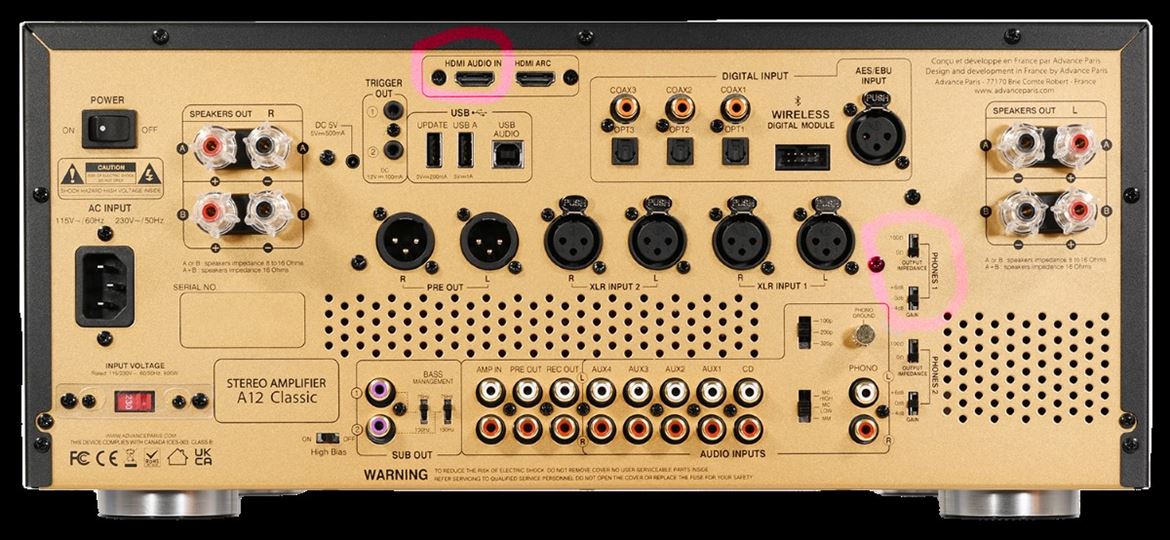
On the other hand, I can't recall any headphone amplifier that has a zero impedance output, or as close as possible, like the A12, which not only has an independent circuit for each output but also offers an impedance switch between 0-100 ohms.
Why is zero impedance so important?
In order for a headphone amplifier to work properly, it's important to keep in mind that the output impedance of the amplifier should not be equal to the impedance of the headphones, as one might assume. To prevent any audible frequency deviations, the general rule is that the output impedance of the amplifier should be eight times lower than the impedance of the headphones. However, it's recommended that the output impedance be at zero to ensure that the amplifier works well with all types of headphones.
Remember to take your headphones to Delaudio and plug them into an A12. Try it with 100 ohm impedance, and then switch to 0 ohms to hear the difference. Simple solutions to complex problems can sometimes be found where you least expect them. That's all I wanted to say, for today.
C’est si bon
De se dire des mots doux
Des petits riens du tout
Mais qui en disent long
Specifications:
|
Output power 8Ω |
2 x 190W RMS |
|
Output power 4Ω |
2 x 280W RMS |
|
Bandwidth |
(-3dB) 10Hz-35kHz |
|
Distortion |
Inf. At 0,007% |
|
Signal to noise ratio |
103 dB |
|
Channel separation |
> 75 dB |
|
Mains voltage |
115-230V |
|
consumption max. |
600 W |
|
Standby consumption |
Inf. At 0,5W |
|
Transformer |
2, Toroidal |
|
Record output |
1 |
|
Amp-Preamp |
Preamp Output |
|
DAC |
PCM1796 |
Price: 2,690 €

